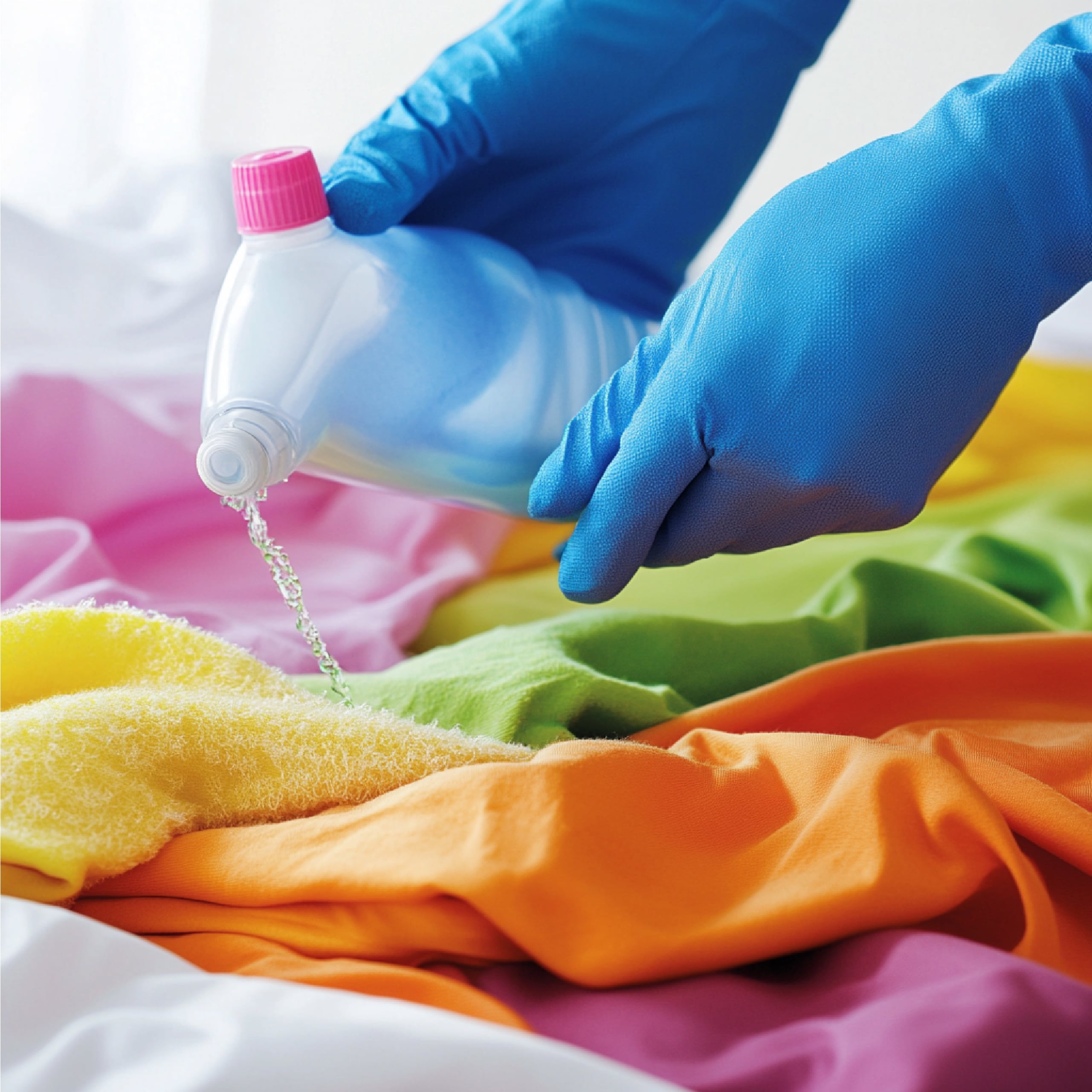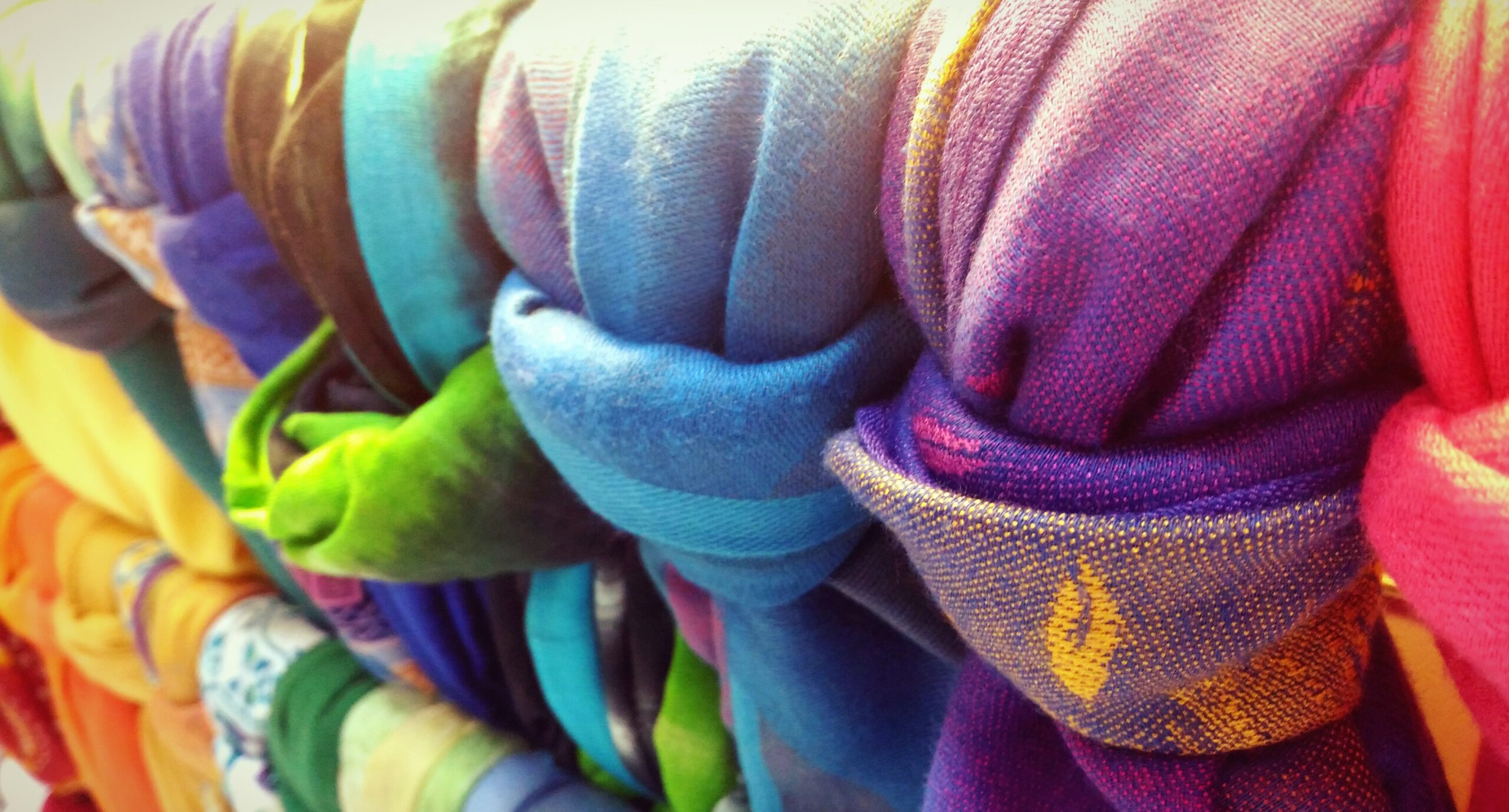Color uniformity and dyeing quality are challenges in textile processing. Some factors, such as uneven dye absorption, mottling, or poor wash fastness, leave the dyeing company frustrated and the customer unhappy. Wetting agents are the important ingredient that helps all that go smoother, quicker and help produce more uniform results.
The Function of Wetting Agents in Dyeing-
A wetting agent is a surface-active substance that decreases the film tension from liquid to a fabric surface. In other words, it improves the ability of water or dye solution to wet and thus consistently penetrate the textile fibers.
Many textile fabrics taken from the original source contain various impurities or natural waxes that inhibit surface wetting and water absorption. Without sufficient wetting to enable the dye to reach the inner layer of the fabric, blotchy or uneven dyeing results.
Once wetting agents are utilized, dyers are assured that the dye solution will readily wet-out evenly across the entire fabric surface, improving the quality of the dye process and improving dyeing efficiency.

Frequent Dyeing Problems and Their Causes –
Before we look at the solution, let’s examine some common issues the textile industry has faced in the dyeing stage:
- Inconsistency of Colors: the fabric can appear with pockets of lighter or darker coloring because dye did not penetrate evenly.
- Patchiness or Lines: patchiness is caused by uneven penetration of dye, causing the dye to absorb unevenly.
- Poor Color Fastness: colors tend to lose their intensity when washed because they are weakly bonded to the various fiber types.
- Increased Reprocessing Costs: these are costs associated with re-dyeing and correcting the shade which can eat up considerable time and resources.
These problems not only impact the quality of the product, they also lead to increases in consumption of chemicals and energy consumption again impacting production costs.
How Wetting Agents Fix Problems in Dyeing
Wetting agents are primarily used in dyeing fabrics to improve penetration of water and dye into the fibers’ surface. They minimize defects in the dyeing process in the following ways:
- Faster Fabric Wet-Out
Wetting agents reduce the dye bath’s surface tension, enabling the dye bath to rapidly and evenly wet the surface of the entire fabric. The objective here is to have each fiber absorb the dye consistently.
- Improved Dye Penetration
Wetting agents encourage dyes to penetrate deeper layers of the fibers, also resulting in richer dye shades and more consistency in shades — particularly for tightly woven or synthetic fabrics with higher resistance to water.
- Improved Dye Leveling
The wetting process allows for more consistent and even diffusion of the dye into the fiber, drastically reducing differences in shades or streaks during the dyeing process.
- Improved Color Fastness
Wetting agents assist in providing more consistency in the engineered bond between the dye and fibers, increasing the degradation resistance to washing, light, and rubbing, which leads to a longer-lasting textile.
- Reduced Process Time
When wetting agents improve the efficacy of wetting and subsequent layers, the time of processing can be greatly reduced. The additional benefit of this is reduced energy consumption and the likelihood of having to reprocess and/or waste materials.

Uses of Wetting Agents in Textile Processes
Wetting agents can be used for more than just dyeing; they are useful throughout different parts in the life cycle of the textile.
- Pretreatment: Like the dyeing process, wetting agents are applied to effectively remove oils, waxes, and other impurities prior to dyeing.
- Dyeing: Wetting agents are also indicated during the dyeing process to improve dye dispersion as well as penetration through the fibers and/or fabrics.
- Finishing: Wetting agents are especially important to ensure an even chemical coating during the softening or functional finishes. As these chemicals are most compatible with commercial textile fibers (cotton, polyester, viscose, or blends), they will always be a chemical that every textile manufacturer needs to have on hand.
Selecting the Correct Wetting Agent for Dyeing Textiles
Not all wetting agents work the same. The right one is dependent on several areas:
- Fabric Type: Synthetic fibers will need a stronger surfactant than cotton, for example.
- pH Compatibility: Some wetting agents work best in acidic dye baths, some in neutral and some in alkaline dye baths.
- Foam Profile: Low-foaming wetting agents are desirable in the case of speed of dyeing because they may lead to overflow.
- Process Temperature: How well it holds up at the dyeing temperature demonstrates its stability for consistent performance.
For example, low-foaming, anionic wetting agents are great candidates in continuous dyeing or jet dyeing, and in contrast, non-ionic wetting agents are better suited to delicate fabrics that require more consideration.

The Environmental Benefits of New Wetting Agents
As sustainability becomes a more significant industry focus, manufacturers are now developing sustainable wetting agents.
These agents are:
- Biodegradable and APEO-free (Alkyl Phenol Ethoxylates).
- Energy-efficient, allowing dyeing at lower temperatures.
- Lower chemical load, which reduces the effluent treatment requirement for the two liter thread count dyeing.
These enhancements can improve process efficiency and assist textile companies in meeting the international environmental regulations.
How Wetting Agents Improve Productivity and Lowers Cost-
In addition to improving quality, wetting agents also eliminate costs directly.
- Less re-dyeing means less chemical and water use.
- Faster dyeing time means lower energy costs.
- More repeatable results mean lower quality rejects.
In other words, when you invest in the correct wetting agent, you can achieve better quality at a lower cost of operation.
Additional Benefits for Textile Producers
- In addition to enhanced dyeing performance, wetting agents additionally:
- Strengthen the efficacy of other auxiliary agents such as dispersing or leveling agents.
- Improve the handle and surface appearance of finished fabrics.
- Facilitate automation and machine performance in continuous dyeing operations.

Conclusion
Good dyeing in the textile industry means more than just the aesthetics of a shade — it encompasses consistency, efficiency, and sustainability daily. Wetting agents are one component to achieving faultless fabrics by assisting with dyeing penetration and wash fastness.
By selecting the optimal formulation for a wetting agent, your production will eliminate common dyeing issues, save on costs, and consistently provide high-quality textiles for your end customer.
So, the next time you face uneven dyeing or fading — remember it might be your wetting agent at fault.
FAQs About Wetting Agents in Dyeing
- Why are fabrics sometimes dyed unevenly even with proper pretreatments?
Uneven dyeing is caused by the inability of water to uniformly wet the fabric surface. When a wetting agent is applied, it helps to break the water’s surface tension and allows the dye to disperse quickly and more evenly into the fabric for an even distribution of color.
- Can wetting agents be used with all dyes and fibers?
Yes. Most wetting agents are compatible with a range of dyes and textile fibers (e.g., cotton, polyester, viscose). It is always a best practice to select the appropriate type (anionic or non-ionic) for your specific process.
- How do wetting agents help improve colorfastness?
Wetting agents help the dyes penetrate into the fibers both deeply and uniformly to strengthen the bond between the dyes and fibers. This results in improved resistance to fading in wash, light, or wear.
